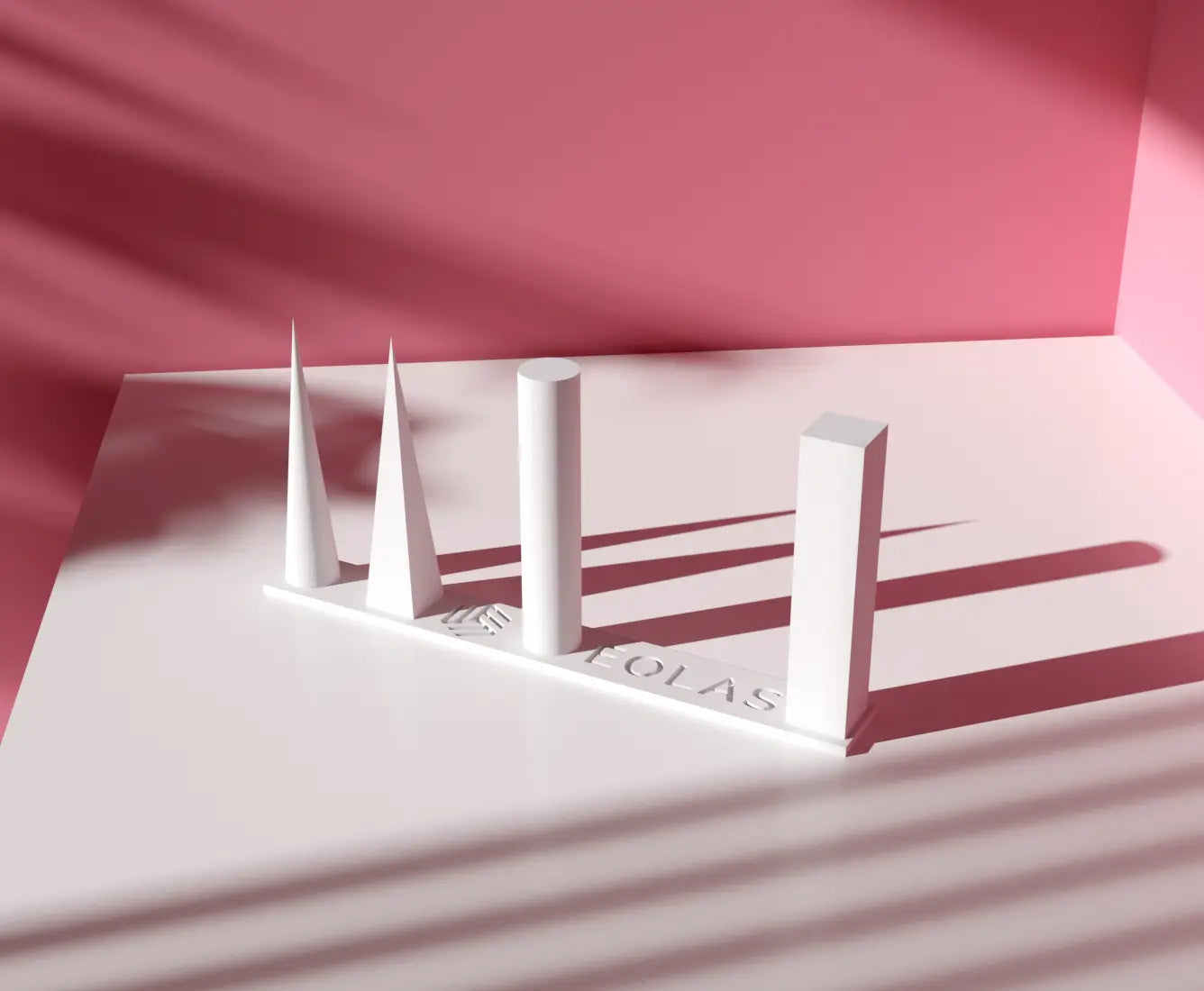Codigo Escuela 4.0
Article author:
Sergio PeciñaArticle published at:
March 16, 2025
Drawer menu
PLA (Polylactic acid) filament is the most popular filament due to its ease of use. It is produced from starch from the cultivation of corn, sugar cane or other starch-rich vegetables.
It is essential to consider the extrusion device and the nozzle in order to get the best results when working with PLA filaments. The temperature range of this filament is quite large, ranging from 180°C to 230°C. For darker colours, a temperature increase of 3°C to 5°C is usually recommended.
In order to get the most accurate parameterisation for your 3D printer, you can perform a temperature test.
It is not crucial to use a heated bed when working with PLA, but it is strongly advised, especially for large prints, to improve adherence and prevent warping. The optimal temperature for these kinds of prints is between 50°C and 65°C. If a heated bed is not available, a lacquer or surface prepared for 3D printing such as magnetic strips with textured sheets or PEI sheets must be used. Kapton tape or masking tape may also be used for this purpose.

When parts have a lot of detail, it is important to help the plastic solidify correctly; otherwise, it will solidify too quickly. It is not recommended to turn on this fan in the first layers in order to enhance the part's adhesion to the surface.
Having a general idea of the optimum print speeds for a 3D printer is very important, as it is contingent on the whole set of components. Having said that, 35mm/s to 65mm/s would be an optimal range for most instances.
The layer height is determined by the nozzle's output diameter, with 50% being optimal but ranging from 75-80% and 25% respectively. A 0.4mm nozzle would have a layer height of 0.2mm and maximum values of 0.3mm and 0.1mm, for example.
The purpose of this parameter is to absorb the dimensional variations of the filaments, therefore a flow test must be conducted to determine the precise value for each material in the printer where it will be used. This parameter should not shift more than 5% in a normal print, meaning it must be between 95% and 15% in order to maintain consistency. If our extruder is badly calibrated after performing the flow test, we must calibrate it first in order to achieve the best results.
Using laminators, you can usually set the percentage at which the material is laminated to 120% of the nozzle diameter, which is a decent value. The nozzle diameter, however, cannot be set below the nozzle diameter. You may increase the thickness of the walls in a single pass to produce stronger parts without increasing the printing time by adjusting this value.

An optimal value must be determined through a retraction test when using this parameter, which depends on the hotend-extruder assembly. The following retraction values are provided as a starting point:
